|
This is the recipe and roasting technique for the juiciest, most tender and flavorful Perfect Roast Turkey! Starting with a fresh turkey and Apple Cider Turkey Brine, savory Herb Butter inside and outside, with fresh herbs, vegetables and an apple and orange tucked inside to create the juiciest, most flavorful turkey every.single.time. And the Herbed Turkey Gravy is TO DIE FOR! You will be the hero of Thanksgiving with this Perfect Roast Turkey with Herbed Turkey Gravy! If you've never roasted a turkey before, or if you've roasted too many that were dry and with no flavor, this is the fail-proof recipe you'll come back to over and over again. This post has all of my tips and tricks as well so you'll have turkey perfection every time. Make sure to read through the entire recipe before you start, gather all of your ingredients together, and let's get roasting that turkey! And we'll never tell anyone else just how EASY it is to make a Perfect Herbed Roast Turkey! LET'S TALK TURKEY...WHAT KIND OF TURKEY SHOULD I USE? I always recommend a fresh, NOT frozen turkey, because frozen turkeys are often pre-brined, which means salt is added to preserve the turkey. Costco always has fresh turkeys available during Thanksgiving; you can also order fresh and not frozen turkeys from your local butcher in the weeks leading up to Thanksgiving and pick it up when you need it. For this recipe, DO NOT USE a kosher, self-basting or pre-brined turkey. WHAT SIZE TURKEY DO I NEED? The basic rule of thumb is 1-1/2 pound of turkey per person. If you want leftovers, or have big eaters coming to your house, plan on 2 pounds per person. In other words, to feed 12 people, you’ll need an 18-pound turkey. This formula will give you generous leftovers – and isn’t that the best part of Thanksgiving? HOW SHOULD I THAW A TURKEY? If you aren't able to buy a fresh turkey, don't make the mistake of waiting until Thanksgiving to thaw your turkey, or even waiting a few days before. Frozen turkeys can take 3-5 days to thaw in the refrigerator, and our brine takes a day, so plan accordingly! Give yourself plenty of time. The safest and most convenient way to thaw a turkey is in the refrigerator. Place turkey in a roasting pan to catch any juices from the packaging. The general rule is 24 hours for every 5 pounds. If you have a 16 pound turkey, allow for 3 solid days for defrosting, 1 day for brining, and 1 day for caution - just to give yourself a little wiggle room. A defrosted turkey is completely safe in your refrigerator for a couple of days. LET'S TALK BRINING...WHAT IS BRINING? Brining is a method of marinating that uses salted water to increase the moisture, and seasoning and aromatics to increase flavor, which both help the turkey retain moisture and flavor during cooking. According to America's Test Kitchen, turkey roasted straight out of its package will retain about 82 percent of its total weight after cooking, but a brined turkey will retain about 93 percent of its total weight after cooking. This is 11% more juices, which means more moist and tender turkey! Turkey is by nature a lean meat, so it needs extra help in the moisture and flavor department. Brining is the best way to season and infuse your turkey with moisture and flavor, because it actually changes the molecular structure of the bird. The salty brining solution makes the turkey moister by hydrating the cells of its muscle tissue before cooking, via the process of osmosis, and allows the cells to hold onto the moisture while they are cooked. The salt is left in the brine solution, not the bird. Brining does NOT make the roasted turkey taste salty - you will rinse the turkey after brining before cooking. WHAT KIND OF SALT SHOULD I USE? I recommend sea salt for the Apple Cider Turkey Brine because it has wonderful flavor, and kosher salt for roasting the bird. Kosher salt is twice as strong, so if you must use it in the Apple Cider Turkey Brine, cut the salt measurements in half. If you do use a frozen turkey, cut the sea salt in the brine by half. DO NOT USE a kosher, self-basting or pre-brined turkey for this recipe. HOW DO I BRINE A TURKEY? I usually prepare my Apple Cider Turkey Brine the day before I want to start brining my turkey. Next, prepare your turkey by removing the neck, giblets and tailpiece. You'll want to do this in your sink, as a lot of juices will be released when you open the turkey bag. Next, place your turkey in a large brining bag. You can use actual Brining Bags, but I've had huge success using Reynolds Oven Bags (Turkey Size). I highly recommend double bagging your turkey in case the bag punctures or leaks. Once your turkey is in the bag, pour the cold Apple Cider Turkey Brine over the turkey. Make sure the brine fills the cavity of the turkey, and covers the entire turkey. If your bag needs more liquid to cover the entire turkey, top it off with equal amounts of apple cider and ice water. Squeeze out any extra air and seal the bag tightly. You will now let the turkey brine for 16-24 hours (the general rule of thumb is 1 hour per pound of turkey). If the brine doesn’t cover the turkey, be sure to flip the bag every 4 hours. If the vegetable drawer of your refrigerator is big enough, it is a great place to brine your bagged turkey. If your refrigerator space is limited, then place your turkey in the brining bag in a cooler or large bucket and surround with ice packs. Rotate turkey every 4 hours. (I prefer the cooler method, as I can place ice around the turkey brining bag, shut the top and not worry about it at all. If you're roasting more than one turkey, the cooler method is the only way to go!) The next day, remove the turkey from the brine, place it in the sink and cut the bag open. Thoroughly rinse the turkey with cold water, including the cavity, for at least 5 minutes to get rid of excess salt. Next, place your turkey on a roasting rack set in a roasting pan and thoroughly pat dry with paper towels. Place the turkey uncovered in the refrigerator for at least 30 minutes while you prepare the Herb Butter. This will give the skin a chance to dry out a little bit, which will give you crispier skin during roasting. HERB BUTTER IS OUR SECRET...WHY HERB BUTTER? Even though our turkey will be wonderfully moist with flavor from brining, it's time to take it to the next level. We'll be using Herb Butter to moisten the turkey, infuse it with savory flavor and give us a golden brown skin. PREPARE HERB BUTTER: To make Herb Butter, whisk together softened butter, olive oil (to prevent the butter from burning), a spoonful of Dijon, and plenty of savory seasonings - parsley, thyme, rosemary, garlic, onion and black pepper. Herb Butter is multi-dimensional, flavorful and balanced. You'll be using Herb Butter for both roasting the turkey and in the Herbed Turkey Gravy. You may want to make extra, as it is delicious in mashed potatoes and served with warm dinner rolls! PREPARE TURKEY FOR ROASTING...APPLY HERB BUTTER: It's not pretty, but it is a genious technique! Gently loosen the skin on the turkey’s breast by gently running your fingers between the skin and meat, taking care not to tear the skin. Loosen the skin on the breasts starting at the large cavity end and go halfway, then rotate the turkey and repeat on the other side until all the breast skin is loosened. Using your hand, place 1/3 of the Herb Butter mixture evenly UNDER the skin of the breast, gently press on the skin to spread the butter evenly; rotate turkey and spread another 1/3 of the Herb Butter on the other breast side. (You can also use the back of a wooden spoon, but your hand just works easier for this task so that you don’t rip the turkey skin.) Spread or slather the remaining 1/3 Herb Butter on the outside top of the turkey including drumsticks and wings. STUFF TURKEY WITH AROMATICS: One of the easier tasks to get ready ahead of time is to chop up your onions, celery and carrots, and place them in zip-locked bags in the fridge until you need them. We'll be using aromatics for stuffing the turkey - fresh carrots, onions and celery, together with a fresh apple and orange, which not only add moistness but flavor as well. I add fresh herbs as well for extra-special flavor and unbelievable aromas while roasting - this is the "Thanksgiving" smell that greets everyone at the door! FRESH HERBS OR DRIED HERBS? I use fresh herbs to stuff the inside of the turkey – our local market sells a package of “fresh poultry herbs” that contains a selection of fresh thyme, sage, rosemary and parsley that work perfectly. When I'm really lucky and the weather doesn't turn to winter too fast, I'm able to use the last of the fresh herbs from my garden for our Thanksgiving feast. I use DRIED herbs in the Herb Butter because fresh herbs have a tendency to burn when roasted. LET'S ROAST OUR TURKEY...ROASTING SECRETS: Roast your turkey on a rack placed inside a roasting pan, which is essential to elevate the meat evenly for even cooking and browning. Next, place 2 cups of chicken broth on the bottom of the roasting pan to enhance moistness and flavor. We'll add more water later if needed so that we'll have plenty of broth for our incredibly flavorful gravy. BREAST SIDE DOWN! For the moistest turkey, we're going to start by roasting the turkey BREAST SIDE DOWN because dark meat needs to cook for a longer period than the white breast meat, and this will help keep the delicate breast meat wonderfully juicy. We'll flip our turkey after 45 minutes and reduce the heat from 400 to 350 degrees. Cooking at a slightly higher temperature initially gives the turkey a crisp skin, and lowering the temperature for the remaining cooking time keeps the turkey from drying out. Wearing silicone oven gloves, or using 2 bunches of paper towels, rotate the turkey so that it is now breast side up. You may need a helper to turn the turkey over, as this usually is a task built for two - one to flip the bird and the other to hold the pan in place. TO BASTE OR NOT TO BASTE? Basting is optional. If you like crispy skin, then don’t baste your turkey at all. I usually baste every 30 minutes for the first half of roasting time, and then only a couple of times during the last half of roasting. (If you are using an oven roasting bag, there is no need to baste.) DO I NEED A MEAT THERMOMETER? Absolutely! I always recommend a digital instant-read thermometer if you have one. Brined turkeys cook much faster than not-brined turkeys, so you will rely on your meat thermometer for perfect roasting. Without a meat thermometer, there is no accurate way to know if the turkey is cooked through. Measure the temperature on the inside of the thigh – making sure not to touch the bone. ROASTING TIME FOR BRINED TURKEYS: This is a general guideline on cooking by the pound for BRINED TURKEY – but you should start checking your turkey at least 30 minutes before the times suggested below: WEIGHT TOTAL ROASTING TIME 8-12 pounds 1.5 to 2 hours 12-16 pounds 2 to 3 hours 16-20 pounds 2.5 to 3.5 hours 20-25 pounds 3.5 to 4 hours LET THE TURKEY REST...Once your turkey has reached an internal temp of 165 for the breast and the thickest part of the thigh reaches between 170-175 degrees, remove your turkey from the oven. It is critically important to let it rest for at least 30 minutes. Cover it tightly with foil and try to be patient! When turkey cooks, the juices are forced away from the heat to the middle of the turkey. The resting time allows for the redistribution of the juices throughout the whole turkey, and will give you incredibly moist turkey throughout! Be patient - and now is the perfect time to make your Herbed Turkey Gravy! LET'S MAKE THE PERFECT HERBED TURKEY GRAVY...To make the most easy and amazingly flavorful turkey gravy, we first want to start by skimming off the fat. The easiest way to do this is by pouring the contents (drippings and liquid) of the roasting rack into a degreasing cup with a spout. Scrape the bottom of the roasting pan good, to make sure you get all of the turkey drippings - the deeply flavorful rich scrapings from the bottom of the roasting pan that boast concentrated flavor that will give you the best gravy on the planet. Next, melt unsalted butter with the reserved Herb Butter. After the butter is melted, whisk in flour and cook, whisking constantly for 5 minutes. This creates a gravy "roux". Next, slowly whisk in 4 cups of the degreased turkey drippings/liquid. Let the gravy simmer until thickened, which usually takes 20-25 minutes. Taste the gravy and add additional Herb Butter if you want even more flavor, and season with salt and pepper to taste.
INGREDIENTS:
12 – 18 pound whole turkey* (I prefer Butterball Fresh Turkeys) Apple Cider Turkey Brine (see Snowflakes & Coffeecakes recipe) Herb Butter 8 tablespoons butter (room temperature) 1 tablespoon olive oil 1 tablespoon Dijon mustard 1 tablespoon dried parsley 1 tablespoon dried thyme leaves 1 tablespoon dried rosemary 1 tablespoon garlic powder 2 teaspoons onion powder 1-1/2 teaspoons black pepper For Roasting: 2 onions (peeled and quartered) 2 stalks celery (chunked) 2 carrots (chunked) 1 orange (unpeeled, cut into quarters) 1 apple (unpeeled, cored and cut into quarters) 2 cloves garlic, peeled 1 sprig/bunch fresh thyme 1 sprig/bunch fresh sage 1 sprig/bunch fresh rosemary 1 sprig/bunch fresh parsley kosher salt & freshly ground pepper 2 cups chicken broth (low sodium) Herbed Turkey Gravy: 3 tablespoons unsalted butter 2 tablespoons Herbed Butter 1/3 cup sifted flour 4 cups turkey drippings/juices HOW I MAKE THIS: FIRST, DECIDE WHAT KIND OF TURKEY YOU WILL BE USING: I always recommend a fresh, NOT frozen turkey, because frozen turkeys are often pre-brined, which means salt is added to preserve the turkey. For this recipe, DO NOT USE a kosher, self-basting or pre-brined turkey. HOW SHOULD I THAW A TURKEY? If you aren't able to buy a fresh turkey, don't make the mistake of waiting until Thanksgiving to thaw your turkey, or even waiting a few days before. Frozen turkeys can take 3-5 days to thaw in the refrigerator, and our brine takes a day, so plan accordingly! Give yourself plenty of time. The safest and most convenient way to thaw a turkey is in the refrigerator. Place turkey in a roasting pan to catch any juices from the packaging. The general rule is 24 hours for every 5 pounds. If you have a 16 pound turkey, allow for 3 solid days for defrosting, 1 day for brining, and 1 day for caution - just to give yourself a little wiggle room. A defrosted turkey is completely safe in your refrigerator for a couple of days. TWO DAYS BEFORE ROASTING: · PREPARE APPLE CIDER TURKEY BRINE according to Snowflakes & Coffeecakes recipe directions; refrigerate overnight. ONE DAY BEFORE ROASTING: · Remove the turkey’s giblets, neck and tailpiece – look in both cavities and make sure you remove everything so that you don’t have any surprises when serving! New food safety guidelines suggest that you don’t rinse your turkey, but I’ll leave that up to you. If you do rinse your bird, pat dry with paper towels. · Next, place your turkey in a large brining bag. You can use actual Brining Bags, but I've had huge success using Reynolds Oven Bags (Turkey Size). I highly recommend double bagging your turkey in case the bag punctures or leaks. Once your turkey is in the bag, pour the cold Apple Cider Turkey Brine over the turkey. Make sure the brine fills the cavity of the turkey, and covers the entire turkey. If your bag needs more liquid to cover the entire turkey, top it off with equal amounts of apple juice and ice water. · Squeeze out any extra air and seal the bag tightly. You will now let the turkey brine for 16-24 hours (the general rule of thumb is 1 hour per pound of turkey). If the brine doesn’t cover the turkey, be sure to flip the bag every 4 hours. If the vegetable drawer of your refrigerator is big enough, it is a great place to brine your bagged turkey. If your refrigerator space is limited, then place your turkey in the brining bag in a cooler or large bucket and surround with ice packs. Rotate turkey every 4 hours. (I prefer the cooler method, as I can place ice around the turkey brining bag, shut the top and not worry about it at all. If you're roasting more than one turkey, the cooler method is the only way to go!) ROASTING DAY: 1. To remove the turkey from the brine, place the bag in your kitchen sink and cut the bag open. Thoroughly rinse the turkey with cold water, including the cavity, for at least 5-10 minutes, inside and out, to get rid of excess salt. Next, place turkey, breast side up on wire rack set in a large roasting pan and thoroughly pat dry with paper towels. Place the turkey uncovered in the refrigerator for at least 30 minutes while you prepare the Herb Butter. This will give the skin a chance to dry out a little bit, which will give you crispier skin during roasting. 2. PREPARE HERB BUTTER: Mix all Herb Butter ingredients together in a medium bowl. Set aside 2 tablespoons of Herb Butter in another small bowl, cover and refrigerate. 3. Preheat oven to 400 degrees and arrange a rack in the lower third of your oven. Remember - the top of your oven typically is hotter than the bottom, and this will help prevent the top of your turkey from burning! 4. PREPARE TURKEY FOR ROASTING: Season the turkey’s cavity with kosher salt and pepper, place fresh herbs into cavity. Stuff the onion, celery, carrot, garlic, apple and orange inside the breast cavity as well. 5. Gently loosen the skin on the turkey’s breast by gently running your fingers between the skin and meat, taking care not to tear the skin. Loosen the skin on the breasts starting at the large cavity end and go halfway, then rotate the turkey and repeat on the other side until all the breast skin is loosened. 6. APPLY HERB BUTTER: Using your hand, place 1/3 of the Herb Butter mixture evenly UNDER the skin of the breast, gently press on the skin to spread the butter evenly; rotate turkey and spread another 1/3 of the Herb Butter on the other breast side. (You can also use the back of a wooden spoon, but your hand just works easier for this task so that you don’t rip the turkey skin.) 7. Spread or slather the remaining 1/3 Herb Butter over the top of the turkey including drumsticks and wings. Flip the turkey over so it is BREAST SIDE DOWN on top of the roasting rack. (NOTE: If you are using a turkey roasting bag rather than a roaster, place 2 tablespoons of flour inside roasting bag and then place turkey in roasting bag BREAST SIDE DOWN.) 8. Tuck wings behind back of the turkey and tuck tips of drumsticks into skin at tail to secure (if they are not already secured). 9. Pour 2 cups of chicken broth into bottom of roasting pan and place in oven. ROAST TURKEY: 10. Roast the turkey BREAST SIDE DOWN at 400 degrees for 45 minutes uncovered. Remove pan from oven and turn oven temp DOWN to 350 degrees. Wearing silicone oven gloves or using 2 bunches of paper towels, rotate turkey so that it is now breast side up. 11. Baste the bird with pan drippings every 30 minutes. If it looks like the chicken broth is getting low, add 2 cups water to bottom of roasting pan. Continue to roast until the breast temp reaches 165 degrees and the thickest part of the thighs reaches between 170 and 175 degrees. To take the temperature of the thigh, insert the thermometer into the inside of the thigh – making sure not to touch the bone. Confirm the temperature by inserting the thermometer in both thighs. Allow about 12 minutes per pound for roasting or refer to the following: WEIGHT TOTAL ROASTING TIME 8-12 pounds 1.5 to 2 hours 12-16 pounds 2 to 3 hours 16-20 pounds 2.5 to 3.5 hours 20-25 pounds 3 to 4 hours 12. Cover turkey loosely with heavy duty aluminum foil once the turkey is golden brown to prevent the skin from burning. 13. Remove the turkey from the oven, keep tightly covered with foil and let it rest 30 to 45 minutes before carving. If you prefer crispy skin, don’t cover at all. PREPARE TURKEY GRAVY: 14. To make the most easy and amazingly flavorful turkey gravy, start by skimming off the fat. The easiest way to do this is to scrape the bottom of your roasting pan good, to make sure you get all of the turkey drippings - the deeply flavorful rich scrapings from the bottom of the roasting pan boast concentrated flavor that will give you the best gravy flavor. Add contents of roasting rack (drippings and liquid) to a degreasing separator with a spout to skim off fat when poured. Pour bottom liquid broth into a large measuring cup until you reach 4 cups; set aside. 15. Add 3 tablespoons of unsalted butter and 1 tablespoon of reserved Herb Butter to a medium heavy saucepan and melt over medium-high heat. Add the sifted flour and cook for 5 minutes, whisking constantly (this will create a gravy roux). 16. Slowly whisk in 4 cups of reserved warm turkey drippings/broth. If you have less than 4 cups, add water to equal 4 cups. Bring to a boil, then reduce to a simmer and stir constantly until thickened, about 20-25 minutes. TASTE the gravy and add the remaining Herb Butter if you want even more flavor; season with salt and pepper to taste. CARVING THE TURKEY: 17. ALWAYS rest your turkey for 30 minutes after removing it from the oven. This will let the meat relax and ensure it stays moist. If you slice it straight from the oven, the juices will run out and you’ll have a dry turkey after all your hard work! 18. First, remove turkey legs and wings. Pull each drumstick away from the body and slice between the breast and the drumstick, bend it back until the bone pops out of the socket and then cut through the joint completely. 19. Cut along both sides of the breastbone, from one end of the turkey to the other. Remove each breast from the bird with one deep slice down both sides, then place on your cutting board and cut slices on an angle crosswise. This will keep the meat moist! 20. Remove dark meat from bottom of turkey and slice into chunks. RECIPE NOTES: WHAT KIND OF TURKEY SHOULD I USE? I always recommend a fresh, NOT frozen turkey, because frozen turkeys are often pre-brined, which means salt is added to preserve the turkey. Costco always has fresh turkeys available during Thanksgiving; you can also order fresh and not frozen turkeys from your local butcher in the weeks leading up to Thanksgiving and pick it up when you need it. For this recipe, DO NOT USE a kosher, self-basting or pre-brined turkey. WHAT SIZE TURKEY DO I NEED? The basic rule of thumb is 1-1/2 pound of turkey per person. If you want leftovers, or have big eaters coming to your house, plan on 2 pounds per person. In other words, to feed 12 people, you’ll need an 18-pound turkey. This formula will give you generous leftovers – and isn’t that the best part of Thanksgiving? HOW SHOULD I THAW A TURKEY? If you aren't able to buy a fresh turkey, don't make the mistake of waiting until Thanksgiving to thaw your turkey, or even waiting a few days before. Frozen turkeys can take 3-5 days to thaw in the refrigerator, and our brine takes a day, so plan accordingly! Give yourself plenty of time. The safest and most convenient way to thaw a turkey is in the refrigerator. Place turkey in a roasting pan to catch any juices from the packaging. The general rule is 24 hours for every 5 pounds. If you have a 16 pound turkey, allow for 3 solid days for defrosting, 1 day for brining, and 1 day for caution - just to give yourself a little wiggle room. A defrosted turkey is completely safe in your refrigerator for a couple of days. WHAT IS BRINING? Brining is a method of marinating that uses salted water to increase the moisture, and seasoning and aromatics to increase flavor, which both help the turkey retain moisture and flavor during cooking. According to America's Test Kitchen, they found that turkey roasted straight out of its package will retain about 82 percent of its total weight after cooking, but a brined turkey will retain about 93 percent of its total weight after cooking. This is 11% more juices, which means more tender turkey! Turkey is by nature a lean meat, so it needs extra help in the moisture and flavor department. Brining is the best way to season and infuse your turkey with moisture and flavor, because it actually changes the molecular structure of the bird. The salty brining solution makes the turkey moister by hydrating the cells of its muscle tissue before cooking, via the process of osmosis, and allows the cells to hold onto the moisture while they are cooked. The salt is left in the brine solution, not the bird. Brining does NOT make the roasted turkey taste salty - you will rinse the turkey after brining before cooking. WHAT KIND OF SALT SHOULD I USE? I recommend sea salt for the Apple Cider Turkey Brine because it has wonderful flavor, and kosher salt for roasting the bird. Kosher salt is twice as strong, so if you must use it in the Apple Cider Turkey Brine, cut the salt measurements in half. If you do use a frozen turkey, cut the sea salt in the brine by half. DO NOT USE a kosher, self-basting or pre-brined turkey. HOW DO I BRINE A TURKEY? I usually prepare my Apple Cider Turkey Brine the day before I want to start brining my turkey. Next, prepare your turkey by removing the neck, giblets and tailpiece. You'll want to do this in your sink, as a lot of juices will be released when you open the turkey bag. Next, place your turkey in a large brining bag. You can use actual Brining Bags, but I've had huge success using Reynolds Oven Bags (Turkey Size). I highly recommend double bagging your turkey in case the bag punctures or leaks. Once your turkey is in the bag, pour the cold Apple Cider Turkey Brine over the turkey. Make sure the brine fills the cavity of the turkey, and covers the entire turkey. If your bag needs more liquid to cover the entire turkey, top it off with equal amounts of apple juice and ice water. Squeeze out any extra air and seal the bag tightly. You will now let the turkey brine for 16-24 hours (the general rule of thumb is 1 hour per pound of turkey). If the brine doesn’t cover the turkey, be sure to flip the bag every 4 hours. If the vegetable drawer of your refrigerator is big enough, it is a great place to brine your bagged turkey. If your refrigerator space is limited, then place your turkey in the brining bag in a cooler or large bucket and surround with ice packs. Rotate turkey every 4 hours. (I prefer the cooler method, as I can place ice around the turkey brining bag, shut the top and not worry about it at all. If you're roasting more than one turkey, the cooler method is the only way to go!) The next day, remove the turkey from the brine, place it in the sink and cut the bag open. Thoroughly rinse the turkey with cold water, including the cavity, for at least 5 minutes to get rid of excess salt. Next, place your turkey on a roasting rack set in a roasting pan and thoroughly pat dry with paper towels. Place the turkey uncovered in the refrigerator for at least 30 minutes while you prepare the Herb Butter. This will give the skin a chance to dry out a little bit, which will give you crispier skin during roasting. WHY HERB BUTTER? Even though our turkey will be wonderfully moist with flavor from brining, it's time to take it to the next level. We'll be using Herb Butter to moisten the turkey, infuse it with savory flavor and give us a golden brown skin. To make Herb Butter, whisk together softened butter, olive oil (to prevent the butter from burning), a spoonful of Dijon, and plenty of savory seasonings - parsley, thyme, rosemary, garlic, onion and black pepper. Herb Butter is multi-dimensional, flavorful and balanced. You'll be using Herb Butter for both roasting the turkey and in the Herbed Turkey Gravy. You may want to make extra, as it is delicious in mashed potatoes and served with warm dinner rolls! ROASTING SECRETS: Roast your turkey on a rack placed inside a roasting pan, which is essential to elevate the meat evenly for even cooking and browning. Next, place 2 cups of chicken broth on the bottom of the roasting pan to enhance moistness and flavor. We'll add more water later if needed so that we'll have plenty of broth for our incredibly flavorful gravy. START WITH BREAST SIDE DOWN! For the moistest turkey, we're going to start by roasting the turkey BREAST SIDE DOWN because dark meat needs to cook for a longer period than the white breast meat, and this will help keep the delicate breast meat wonderfully juicy. We'll flip our turkey after 45 minutes and reduce the heat from 400 to 350 degrees. Cooking at a slightly higher temperature initially gives the turkey a crisp skin, and lowering the temperature for the remaining cooking time keeps the turkey from drying out. TO BASTE OR NOT TO BASTE? Basting is optional. If you like crispy skin, then don’t baste your turkey at all. I usually baste every 30 minutes for the first half of roasting time, and then only a couple of times during the last half of roasting. (If you use an oven roasting bag, you won't need to baste at all.) DO I NEED A MEAT THERMOMETER? Absolutely! I always recommend a digital instant-read thermometer if you have one. Brined turkeys cook much faster than not-brined turkeys, so you will rely on your meat thermometer for perfect roasting. Without a meat thermometer, there is no accurate way to know if the turkey is cooked through. Measure the temperature on the inside of the thigh – making sure not to touch the bone. ROASTING TIME FOR BRINED TURKEYS: This is a general guideline on cooking by the pound for BRINED TURKEY – but you should start checking your turkey at least 30 minutes before the times suggested below: WEIGHT TOTAL ROASTING TIME 8-12 pounds 1.5 to 2 hours 12-16 pounds 2 to 3 hours 16-20 pounds 2.5 to 3.5 hours 20-25 pounds 3.5 to 4 hours TIPS TO KNOW WHEN YOUR TURKEY IS DONE: Don’t be afraid of a little pink meat – just because a slice of turkey has a pinkish tint, it doesn’t necessary mean that it’s underdone. The red or pink color in poultry comes from the red protein called myoglobin in the muscle cells that store oxygen. As long as the meat meets the required temperature on your thermometer, it’s perfectly safe to eat. Dark meat does take longer to cook that white meat, as turkey legs are fattier and denser. DO I NEED TO LET THE TURKEY “REST”? Once your turkey has reached the required temps for both white and dark meat, remove your turkey from the oven. It is critically important to let it rest for at least 30 minutes – 45 minutes is even better! Cover it tightly with foil and try to be patient. If you prefer crispier skin, skip the foil altogether. When turkey cooks, the juices are forced away from the heat to the middle of the turkey. Resting gives it time to reabsorb the juices; otherwise they dribble out when you slice, and the meat will be dry. Be patient - now is the perfect time to make your Herbed Turkey Gravy! CAN I USE A TURKEY OVEN BAG RATHER THAN ROASTING? You can, but you won’t have the same crispy skin that you will get by oven roasting. You also won’t be basting your turkey during roasting. Bake breast down for the first half hour, then flip the entire bag over so that the turkey roasts breast-side up for the remainder of your cooking time. Make sure to cook according to the instructions for your turkey cooking bag, keeping in mind that a brined turkey will cook faster than a non-brined turkey, and a turkey cooked in an oven bag will cook much faster than a roasted turkey – so adjust your cooking time accordingly and make sure to use a meat thermometer so that you don’t overcook your turkey. NEVER A GRAVY CRISIS: Don’t panic, gravy can usually be saved! To fix lumpy gravy, pour it through a fine sieve. If it’s too thick, gradually whisk in a little turkey stock to loosen. Simmer thin gravy over medium-high heat until it thickens or add a mixture of equal parts of flour and butter while whisking until it thickens. A splash of cooking sherry Worcestershire sauce or even soy sauce will add depth of flavor to a bland gravy – make sure to taste with every addition! A greasy gravy can be rescued by skimming off as much fat as possible with a wide-flat spoon or a fat skimmer. Originally Posted November 2012; revised and reposted November 2019.
© SnowflakesandCoffeecakes. All images, attachments & content are copyright protected and all rights reserved. Please do not use my images without prior permission. If you want to republish this recipe, please link back to www.snowflakesandcoffeecakes.com for the recipe NEVER MISS A NEW RECIPE! FOLLOW ME ON
|
WELCOME!HI, I’M MAMA V! I'm so happy you stopped by to visit this delicious corner of the internet! This is the place to find family favorite and kitchen-tested quality recipes, along with photographs and tips to give you the confidence to cook and bake from scratch.
You'll find a complete recipe index on the Recipe Collection page or you can use the Recipe Collection dropdown feature to see a visual recipe index by category. If you are looking for something special, the Search function will easily locate your favorite recipe or ingredients. Enjoy - and stop by often! LOOKING FOR SOMETHING SPECIAL?Type in the name of recipe, category or any ingredient to search my recipe database. This website uses marketing and tracking technologies. Opting out of this will opt you out of all cookies, except for those needed to run the website. Note that some products may not work as well without tracking cookies. Opt Out of Cookiesgoogle0c2f49157236fe49
|
- Welcome
- Blog
- About
-
Recipe Collection
- Appetizers & Charcuterie Boards
- Bakery & Sweet Shop >
- Beverages
- Breakfast & Brunch >
- Fruits >
- The Main Event >
- Salads
- Sauces, Spices & Glazes
- Side Dishes
- Vegetables
-
Holidays & Special Celebrations
>
- Sleighrides & Cocoa Parties
- Valentines
- Mardi Gras
- St. Patrick's Day
- Easter
- Cinco de Mayo
- Kentucky Derby
- Garden Teas
- Patriotic
- Fathers' Day
- Halloween
- Football & SuperBowl
- Thanksgiving
- Christmas Traditions >
- New Year Celebration
- Baby Showers
- Bridal Showers & Weddings
- Birthday Parties
- Rehearsal Dinners & Day-After-Brunches
- Seasonal Favorites >
- Cooking School
- GARDENING
- Contact
Copyright Statement© Snowflakes & Coffeecakes 2024. All rights reserved.
All images & content are copyright protected. Please do not use any of my images without prior permission. Unauthorized use and/or duplication of this material without express and written permission from this site’s owner is strictly prohibited. Thank you for visiting! I hope that you enjoyed your stay, and have found some recipes that your family will enjoy! Have any questions or comments? Feel free to contact me! Bon Appétit, Mama V |


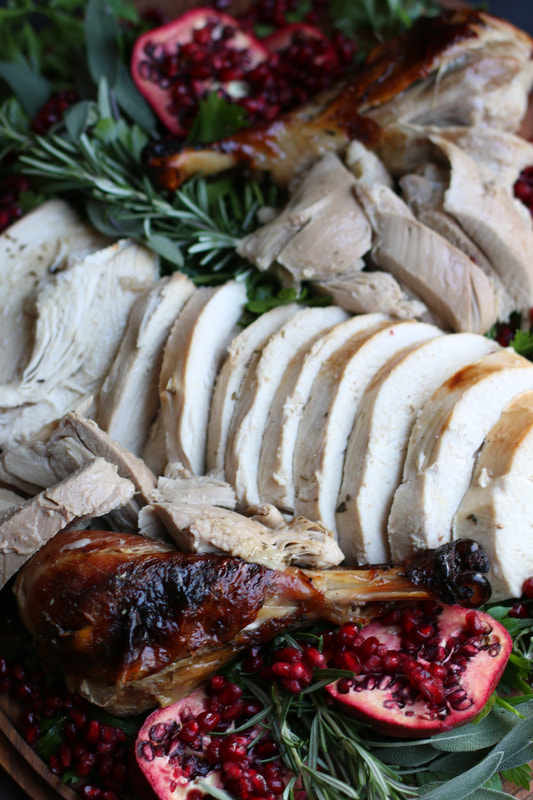


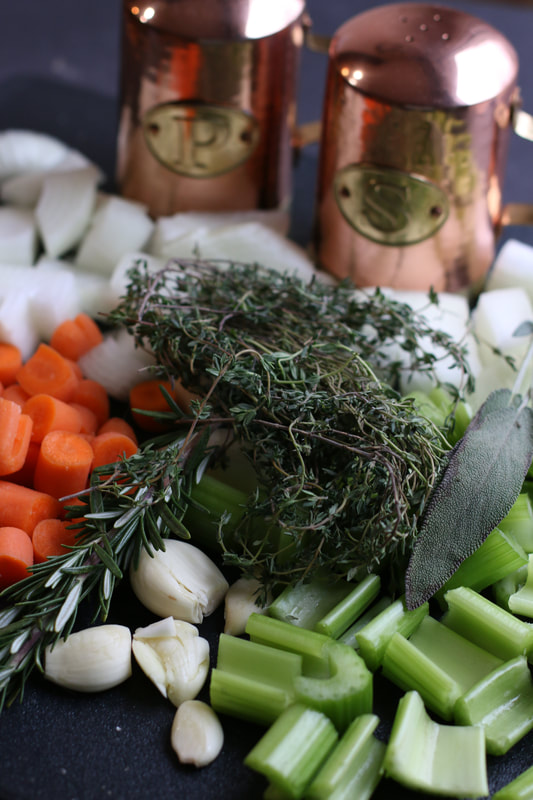

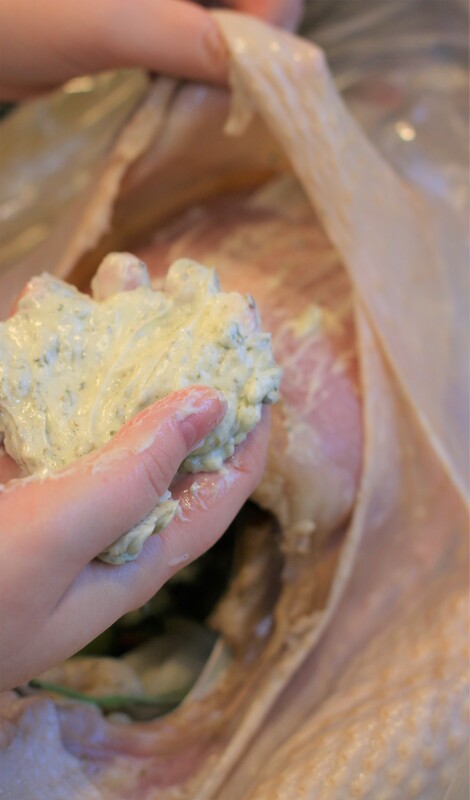




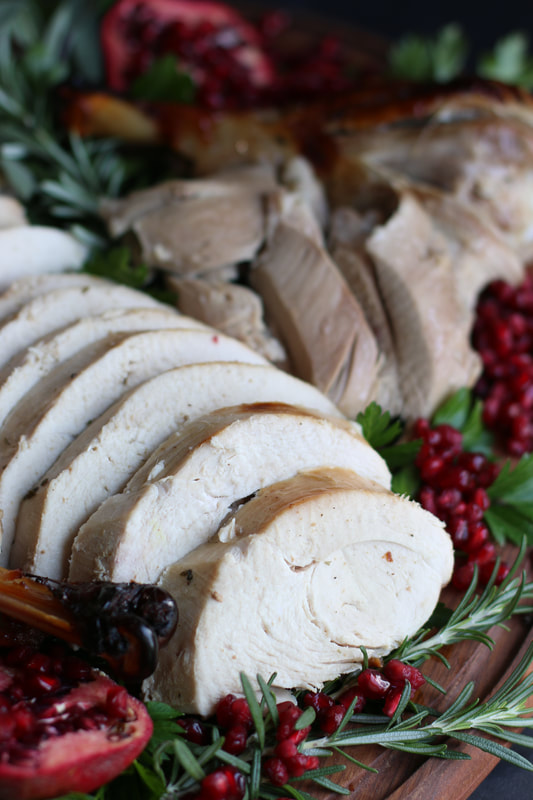

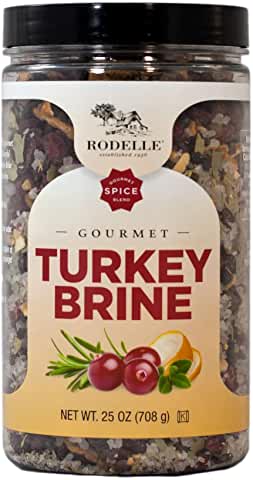

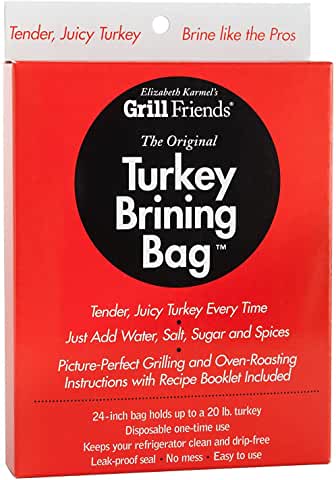


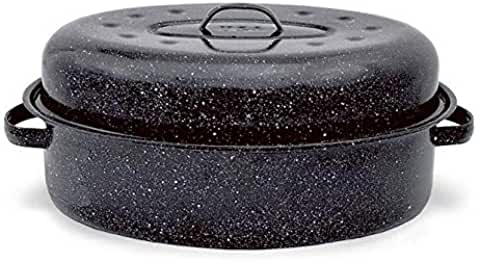

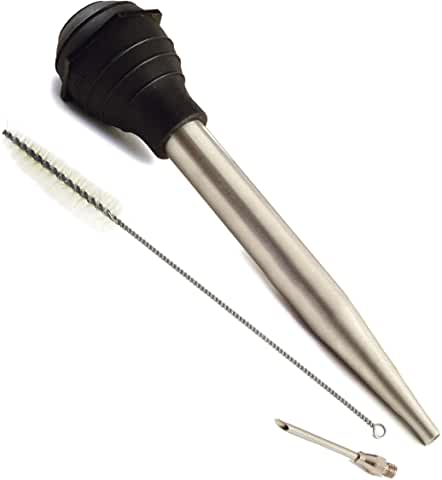



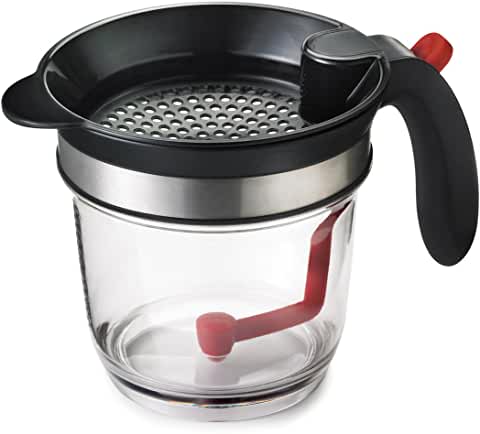






 RSS Feed
RSS Feed

